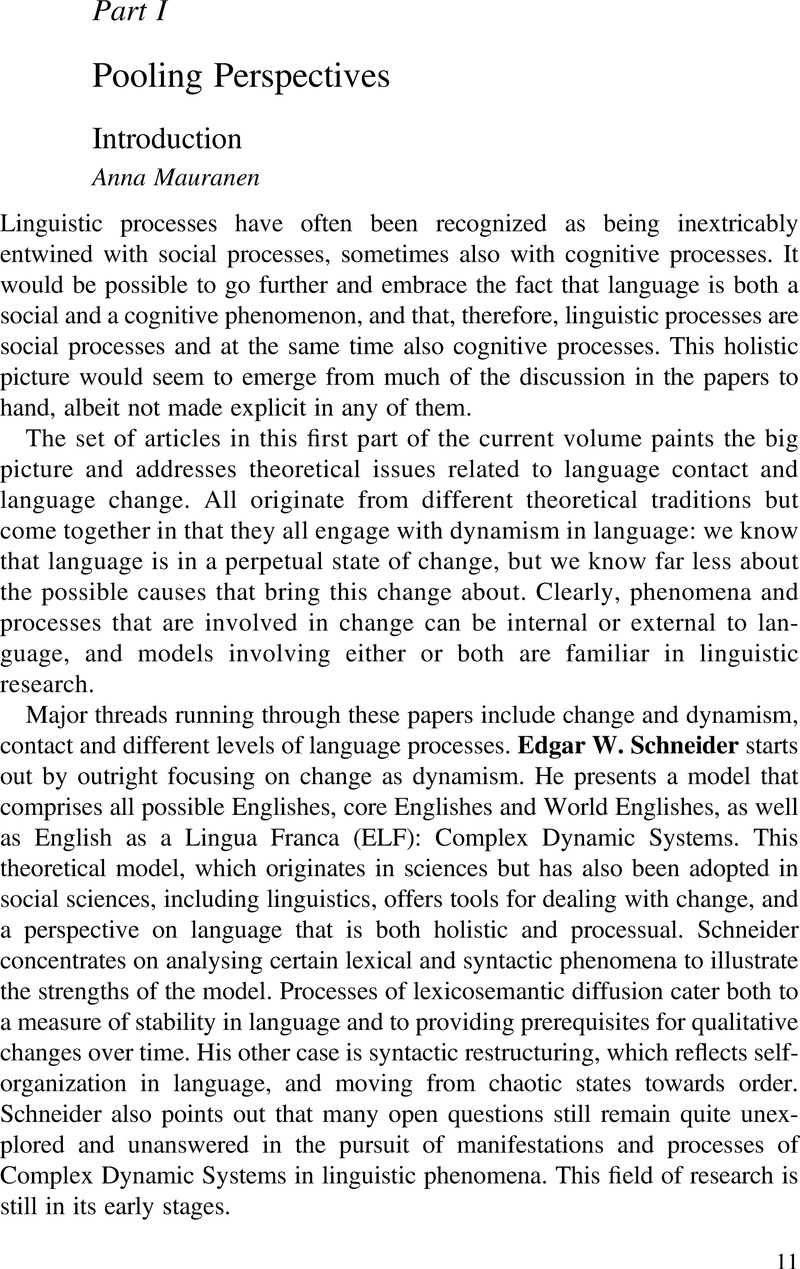Part I - Pooling Perspectives
Published online by Cambridge University Press: 17 December 2020
Summary

- Type
- Chapter
- Information
- Language ChangeThe Impact of English as a Lingua Franca, pp. 11 - 174Publisher: Cambridge University PressPrint publication year: 2020

